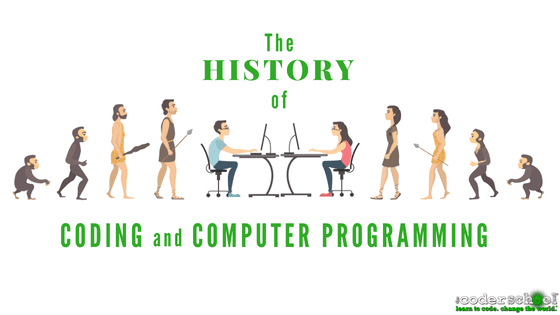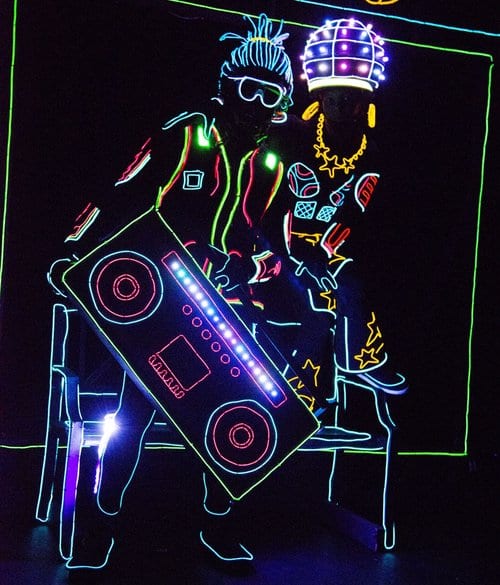Ask any parent and they’ll tell you that their kids often find it easy to get into a new activity or hobby without much prodding from parents. This is especially true for activities like sports or music. However, when you mention programming for kids, the reception can be lukewarm. Most people wouldn’t really put the words “exciting” and “coding” in the same sentence – especially those who haven’t tried it yet.
Of course, we know how fun and empowering coding is, but the problem lies in helping kids see past misconceptions about coding to see how fun it really is! Fortunately, we have 4 surefire steps that will turn that “no way” to a “fine, I’ll try it out, I guess.” And trying it out is all you need – once a kid or teen experiences the fun in coding, they’ll be singing a different tune.
The Lowdown on Coding
So what is this coding thing, anyway? Well, remember how humans communicate with other humans through the use of language? It’s just like that. The only difference: instead of communicating with a person, you are communicating with a machine. This is why when you learn to code, we use programming languages. And if you look at these lines of code and don’t understand a single thing, it’s okay! It’s just communicating with the computer
Imagine going to a foreign country with a different language. Of course, understanding what’s being said is hard because you don’t know the language. However, once you start learning the language, everything starts to make sense! It’s the same thing with programming languages – it looks like gibberish until you start to learn the syntax and methods of speech.
The idea of talking to machines may seem like something straight out of a sci-fi film, but the truth is, humans have been doing it for a long time! But we’re not talking about bloodthirsty artificial intelligence like in “The Terminator.” Through programming languages, humans can give orders to computers and make them perform different types of actions based on the situation. The computers can do normal commands and calculations exponentially faster than humans, without getting tired, burnt out, or talking back.
What’s In It For Them?
So why should you encourage kids or teens to take up coding? There are so many hobbies and recreational activities out there, why should kids choose coding? For one, coding allows kids to bring to life things that normally would be impossible. When it comes to creativity and imagination, kids are a bottomless well. They can be superheroes one day, and futuristic androids the next. They can have dragons for pets and dwarves and elves for sidekicks.
Coding empowers kids and teens, allowing them to unleash their imagination and turn their fantasies into reality! Of course, this doesn’t mean that coding will magically give your kids superpowers, but it allows them to create a superhero from scratch, armed with all the powers that they wish. They can build artificial worlds where they are the hero and they’re off to a wonderful adventure together with their comrades. And when you put it that way, maybe they can be superheroes themselves!
So what are you waiting for? Let’s go ahead with these 4 easy steps to pique your kids’ interest in the fascinating world of coding.
Step #1: Make Coding Fun Again!
A lot of youngsters care a lot about what others think about them. And cool is a word that some wouldn’t associate with programming; in fact, a lot of kids think coding is boring and only losers or nerds do it.
How do you combat this? Simple, just make coding fun for kids and teens. It’s actually as easy as it sounds – think of all the things that kids find cool, and associate it with coding.
Let’s take, for example, Minecraft – a game that’s popular with the kids. So what does Minecraft have to do with coding? Well, Minecraft is written in JavaScript, a popular programming language. In Minecraft, players can code inside the game itself! You see, the game has an item called a Command Block, where you can input lines of code. With Command Blocks, players can do anything from spawning a mob, or even create a fully automated farming system.
Kids as young as 7 years old are learning to input basic codes using Command Blocks to make Minecraft more fun. While Minecraft is one of the most obvious examples of how cool coding is, it’s not the only one. Kids and teens love games and gadgets, and these things run using lines of code. Youngsters will find it fascinating that these seemingly magical contraptions operate using a code, and with enough training, they can pull off the same feat!

Step #2: Coding and Real Life Applications
You can also get teens and kids hooked on coding by using practical and relatable examples. Let’s be honest – lines of gibberish don’t really mean much at first. However, they will understand things better if you take situations and examples from real life.
Kids are generally easier since they are curious and creative, but, they also have a short attention span. The same is true for some teens, so when you’re explaining certain aspects of coding, simple and linear examples are the best. For example, if you want them to explain conditional statements, ask them what they would do if their classmate Bob suddenly invited them to have lunch. Bob’s a nice guy, but not your closest friend, so will you go? No? Then what if Bob said he’ll pay for your lunch, will you join him then? Probably yes. Explain that the example is the basic concept of conditional statements. The computer’s actions depend on what conditions are met and what events are triggered.
Step #3: Simplify the Process
If you start talking to kids and teens about variables, arrays, and algorithms, all you’re going to get are blank looks. Even ordinary adults with no programming background will find it difficult to understand. Programmers have their own language, with different terms and word definitions. For ordinary folks, a bug is an insect. For programmers, a bug is a break or error in the program. To get kids interested in coding, you have to speak their language. Use simple terms! Don’t worry, once they know enough about programming, they will become more familiar with the advanced terms.
Also, if you want kids and teens to love coding, you should put them in an environment that’s conducive for learning. Not all mentors and guides on the web are good for kids and teens. Some are targeted at adults and require a faster pace. What you need is a learning environment that’s specifically designed for kids and teens. Here at Coder School, the pace is a lot slower. The focus is not on learning as many things as possible, but to make sure the students are having fun.
Step #4: Coding Classes For Kids Turn Coding Into A Social Activity
Loneliness makes things less fun for kids and teens, and they are more likely to quit an activity if they’re doing it alone. Although it’s possible to learn coding through YouTube videos, it isn’t as fun as attending coding classes for kids. Aside from finding new friends, they can maintain their interest for coding because they are surrounded by other kids and teens who all love coding.

With coding schools, kids and teens are encouraged to work together as a team. Instead of coming up with a project or small program on their own, they join forces to build something truly amazing. As they say, two heads are better than one!
A Note To Parents
There are actually parents out there who discourage their kids from coding. Some parents fear that if their kids get attached to coding, they’ll lock themselves in their rooms and forget about social interaction, physical activities, and family. This is simply not true. A lot of youngsters do tend to keep to themselves, but this is mostly due to their personalities as opposed to being a side effect of learning programming languages.
Coding may even encourage kids and teens to go out and explore more. After all, you can’t get inspiration for new coding projects inside your room. A lot of programmers go around, observe their surroundings, and take note of everyday problems that can be solved by a program. This is what coding is all about – solving everyday problems using a program. And you can’t find problems to solve inside your room.
On the other hand, some parents really want their kids to start coding. This is especially true for parents who are programmers. However, kids and teens have their own minds and you should take care not to overstep your boundaries. Sharing your love for coding is fine, but don’t force them to like it. Your reasons for loving programming languages may not be the same as your child’s, but it doesn’t mean that they’ll love it less. Allow them to discover how great it is on their own and simply be there to offer support and guidance when they need it.
Do you have a budding developer on your hands? Nurture and develop their love for coding by signing up for a class at any of our locations nationwide! Alternatively, you can try us out by taking advantage of our free trial lesson today!










 TIOBE’s index of popular languages.
TIOBE’s index of popular languages. What kind of job can Coders get?
What kind of job can Coders get?

